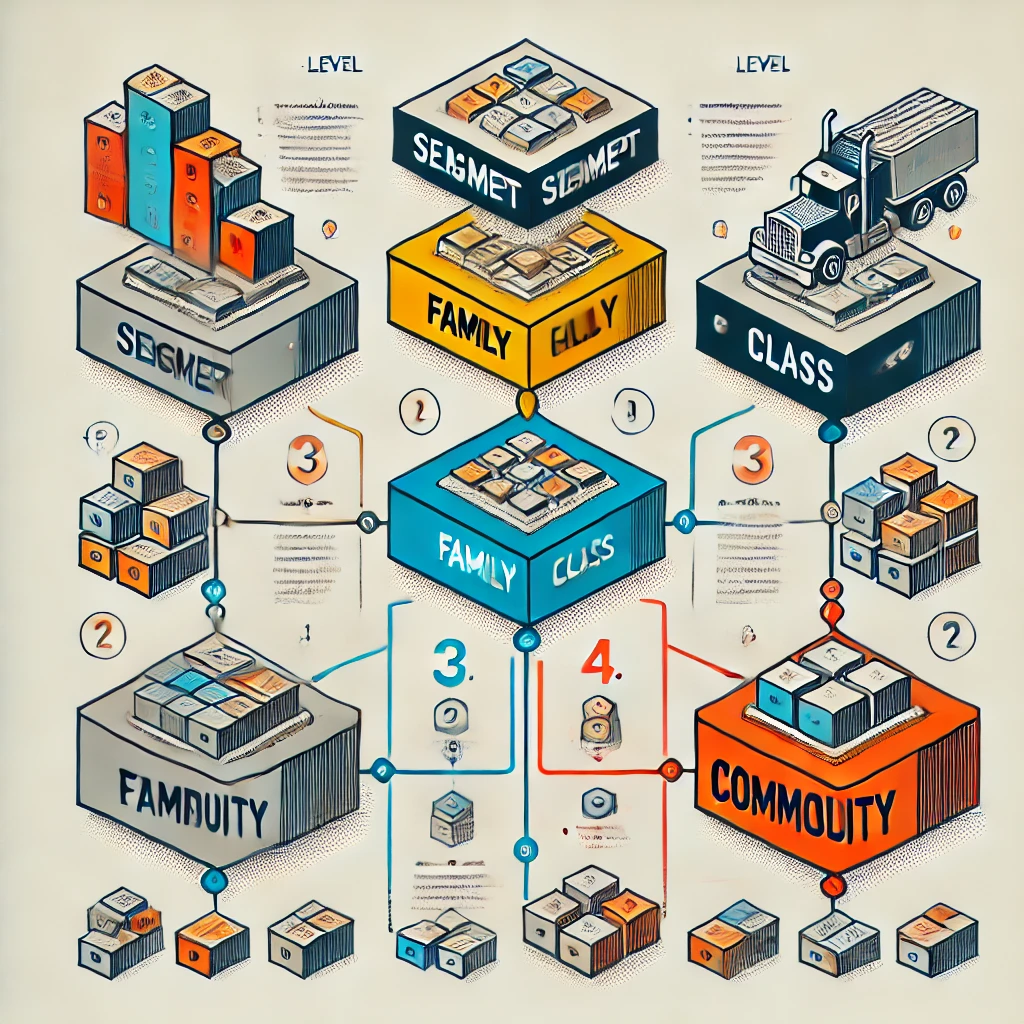The United Nations Standard Products and Services Code (UNSPSC) is an internationally recognized global classification system that is widely used to categorize, classify, and organize products and services across different industries and sectors. It was originally developed and introduced by the United Nations Development Programme (UNDP) in collaboration with Dun & Bradstreet in the year 1998. Since its inception, the UNSPSC has provided a structured, hierarchical framework that facilitates the systematic classification of products and services into specific, well-defined categories. This system makes it significantly easier for organizations, corporations, businesses, and government entities to effectively manage, track, and analyze their procurement, purchasing, and supply chain activities in a more structured and organized manner.
The Structure and Organization of UNSPSC
The UNSPSC is carefully structured and systematically organized into a comprehensive five-level hierarchical framework that ensures clarity and precision in classification:
- Segment: This represents the highest and broadest level of categorization, encompassing large groups of related products and services.
- Family: This level provides a more refined and specific grouping within a broader segment, allowing for better classification and identification.
- Class: Within each family, this level further divides and categorizes products and services into even more specific and detailed groups.
- Commodity: At this level, products and services are categorized at their most specific and granular form, ensuring clarity in classification.
- Business Function (Optional): This is an optional fifth level that provides additional descriptive details regarding the function, purpose, and intended use of the product or service being classified.
Each level within the UNSPSC structure is assigned a distinct and unique two-digit numerical code, which, when combined, results in a complete eight-digit classification code that represents each product or service. For example, the UNSPSC code for “office furniture” might be represented as 56-12-34-56, where each segment of the number corresponds to a specific level within the hierarchical structure.
Examples of UNSPSC Codes
- Segment: 56 (Furniture and Furnishings)
- Family: 12 (Office Furniture)
- Class: 34 (Desks)
- Commodity: 56 (Executive Desks)
If you would like to get more examples of UNSPSC codes read this blog post -> Master UNSPSC Codes: 20 Essential Examples for Better Procurement
If you are looking for a UNSPSC search tool go here -> UNSPSC Search
Practical Applications and Uses of UNSPSC
Procurement and Purchasing Optimization
Organizations, corporations, and government agencies use UNSPSC codes to establish standardized and structured procurement and purchasing processes. By categorizing, grouping, and classifying products and services, they can simplify, streamline, and optimize their purchasing workflows, reduce overall costs, and improve supplier relationship management. For instance, a company can utilize UNSPSC codes to ensure they are accurately comparing pricing, specifications, and features of similar products from different suppliers and vendors in the marketplace.
Spend Analysis and Cost Management
UNSPSC codes assist organizations in conducting comprehensive spend analysis and expenditure tracking. By categorizing and classifying financial transactions and purchases, companies can systematically analyze, assess, and review their spending patterns, allowing them to identify inefficiencies, reduce unnecessary costs, and uncover potential opportunities for greater cost savings. For example, a business might leverage UNSPSC codes to evaluate how much they are spending on office supplies, IT equipment, or raw materials versus other procurement categories.
Inventory Management and Optimization
UNSPSC codes also play a critical role in efficient and effective inventory management by helping organizations systematically track, monitor, and categorize their inventory. Businesses can identify slow-moving products, manage stock levels more effectively, and optimize supply chain processes. For instance, a retail company may use UNSPSC codes to ensure that they maintain the correct mix of inventory in stock, preventing overstocking or shortages of essential goods.
E-Commerce and Digital Marketplaces
Online retailers, digital marketplaces, and e-commerce platforms rely on UNSPSC codes to structure, classify, and organize their product catalogs, making it easier for customers and buyers to search, navigate, and find the exact products or services they need. For example, an e-commerce website can use UNSPSC codes to categorize product listings, improving search functionality and the overall shopping experience for users.
Regulatory Compliance and Reporting
Government agencies, regulatory bodies, and organizations use UNSPSC codes to ensure compliance with procurement regulations, industry standards, and financial reporting requirements. By adopting a standardized classification system, these entities can efficiently classify, document, and report procurement activities. For instance, a government procurement department might use UNSPSC codes to track, audit, and report on public sector purchases, ensuring transparency and accountability.
Conclusion
The UNSPSC is an essential, versatile, and widely adopted classification system that significantly enhances the efficiency, accuracy, and transparency of procurement, purchasing, supply chain, and inventory management activities. By providing a standardized, structured, and systematic approach to product and service categorization, the UNSPSC enables businesses, organizations, and government agencies to make more informed decisions, improve operational workflows, optimize supply chains, and enhance overall efficiency. As industries continue to evolve, the UNSPSC remains an indispensable tool for businesses striving for improved data management, seamless integration, and operational excellence in an increasingly competitive and dynamic global marketplace.

